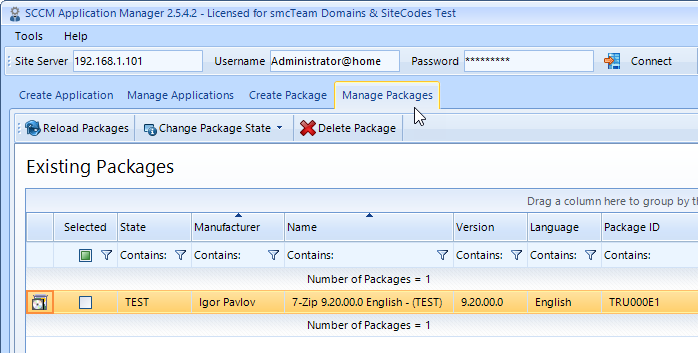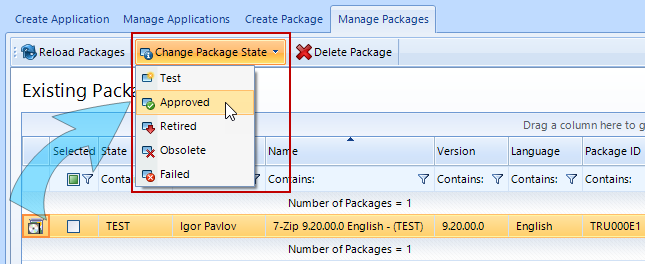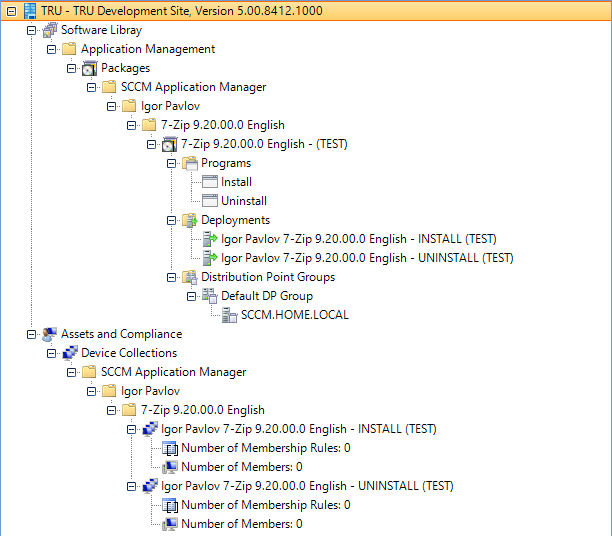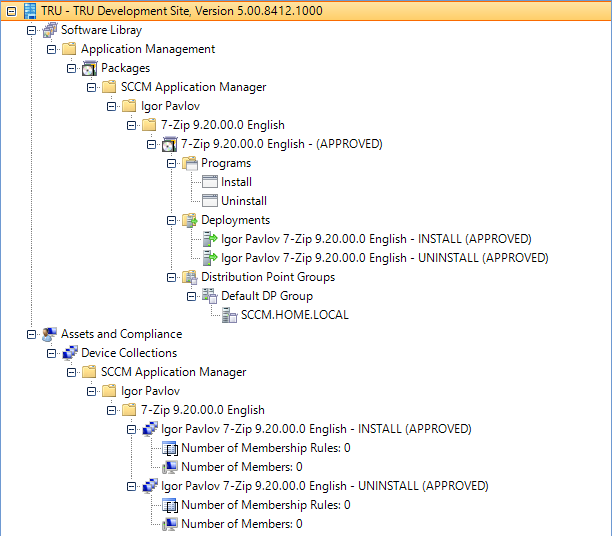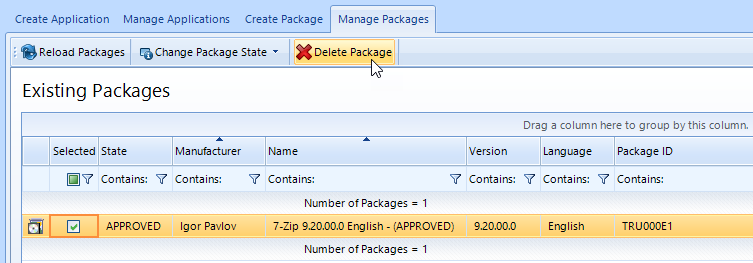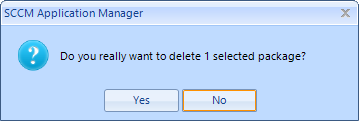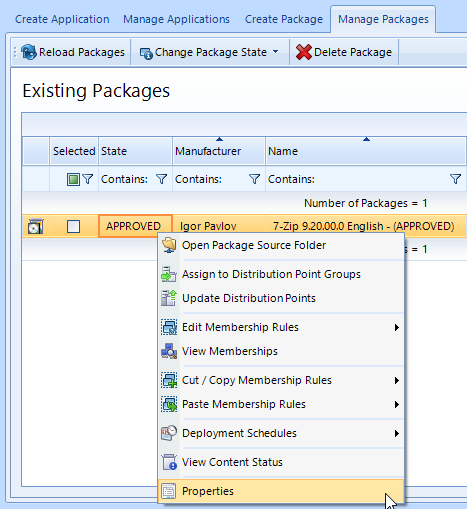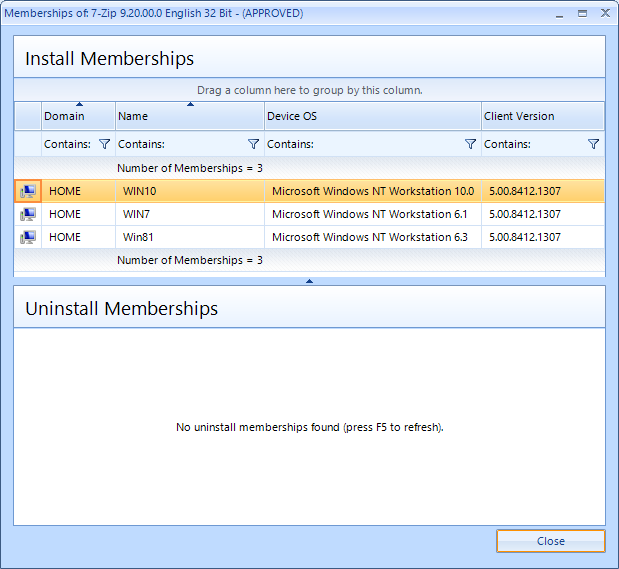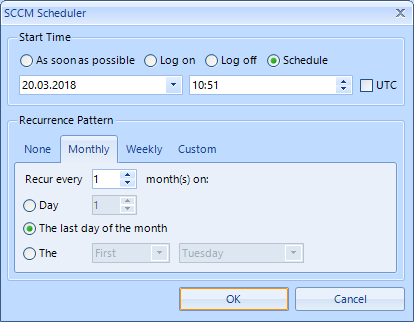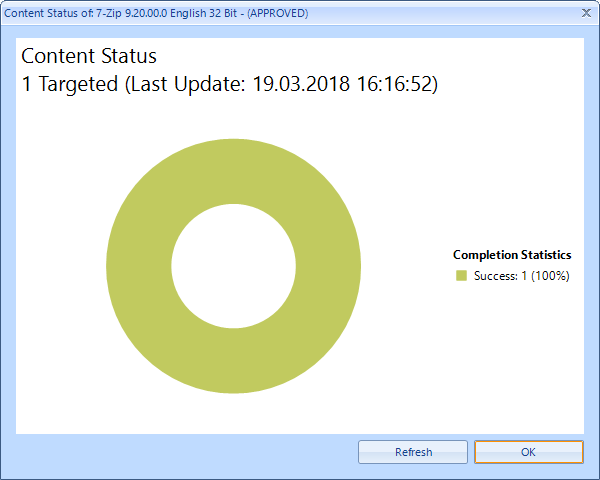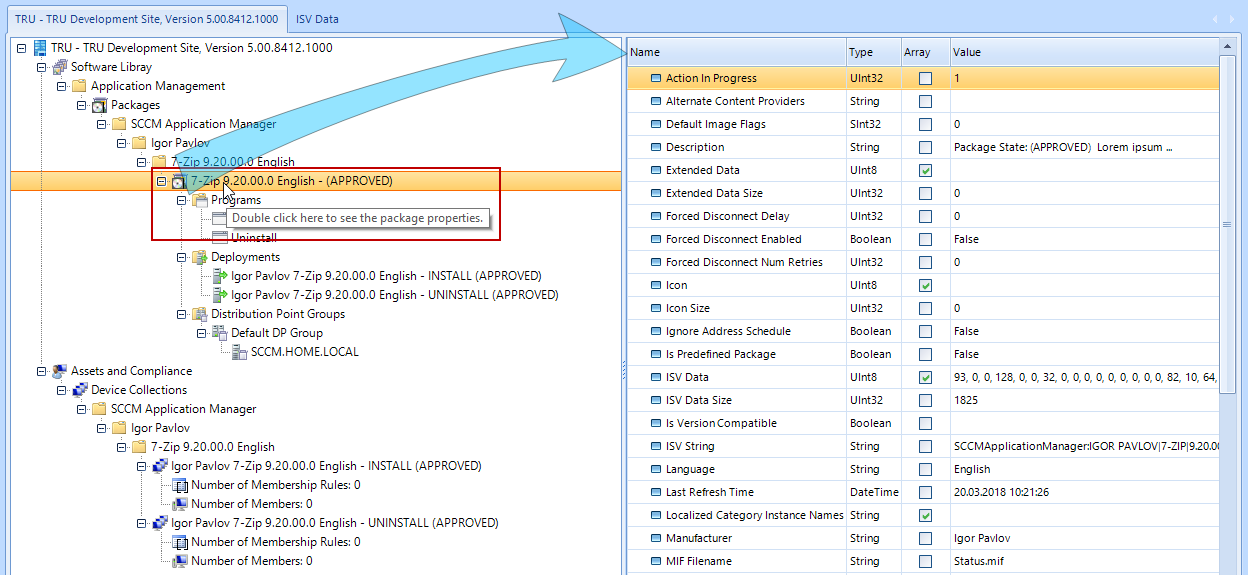Management
The SCCM Application Manager knows "its" packages. Clicking on Manage Packages will display them.
Existing packages that have been created manually are not displayed in the SCCM Application Manager.
Reload Packages
Change Package State
- Test
- Approved
- Retired
- Obsolete
- Failed
The change of a status does not only change the status of the package itself, but also the status of all related objects.
To change the status, you must first select one or more packages using the checkbox (✅).
Starting with version 2.7.2.0, it is possible to make status changes dynamically. Selected packages are not moved to the previously selected state, but to the following status (Step forward) or previous status (Step back). The above menu has been extended accordingly:
The following rules apply:
Step forward
| Current Status | New Status |
| TEST | APPROVED |
| APPROVED | RETIRED |
| RETIRED | OBSOLETE |
| OBSOLETE | remains unchanged |
| FAILED | remains unchanged |
Step back
| Current Status | New Status |
| APPROVED | TEST |
| RETIRED | APPROVED |
| OBSOLETE | RETIRED |
| TEST | remains unchanged |
| FAILED | remains unchanged |
The following message appears:
The package and its properties with the status (TEST):
The package and its properties with the new status (APPROVED):
Delete Packages
To do this, you must first select one or more packages using the checkbox (✅).
The deletion of a package not only deletes the package itself, but also all involved objects (zero footprint), if their deletion is allowed.
Context Menu
Each package has a context menu that can be accessed with the right mouse button:
The individual menu items are described below.
Open Package Source Folder
Opens an explorer with the source path stored in the package.
Assign to Distribution Point Groups
This option can be used to assign distribution point groups to the package.
Update Distribution Points
Updates the distribution points of the selected package.
Edit Membership Rules
The SCCM Application Manager "knows" the collections, which are assigned to the selected package. Membership rules can be edited using an editor.
Reload Computers re-loads the list of computers. Add Computer adds one or more computers to the collection of membership rules.
Reload Collections re-loads the list of collections. Add as Inclusions adds an inclusion collection, Add as Exclusions adds an exclusion collection to the membership rules.
Add from File adds group memberships from a text file. Only those computers that exist within the Microsoft ® System Center are added. The text file must have the following format:
[...]
Computer04
Computer05
Computer06
Computer07
Computer08
[...]Import Rules imports membership rules from a file (*.rul), where as Export Rules exports existing membership rules to a file. Delete Rules deletes all selected membership rules.
Membership rules are permanently saved in Microsoft ® System Center with the Button Save.
Starting with version 3.0 of the SCCM Application Manager the aforementioned functionality is also available analogously for users.
View Membership
Displays the group memberships of all participating collections.
Cut/Copy Membership Rules
Copies the membership rules of a collection. This function can be used to copy or cut membership rules.
Paste Membership Rules
Inserts copied or cut membership rules into a selected collection.
Deployment Schedules
Adds on or more deployment schedules to a package.
Send wake-up packets specifies whether WOL-Packts should be sent in advance. New creates a new deployment schedule.
Edit edits an existing deployment schedule while Delete deletes a deployment schedule.
View Content Status
Displays the content status of a package.
Properties
Displays all properties of a package and the properties of the associated objects. Double-clicking an object can also display the content of the corresponding WMI class.
